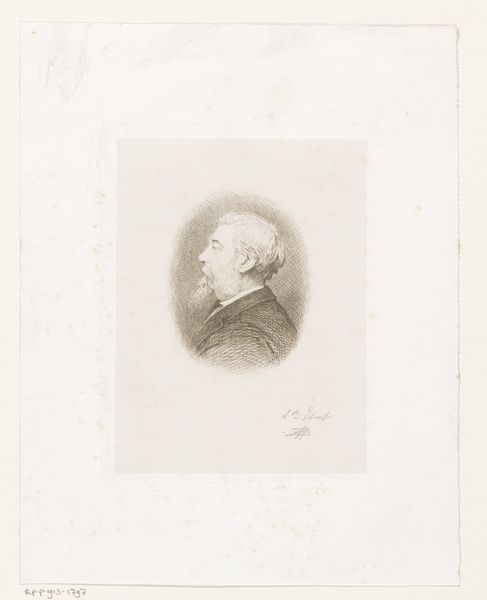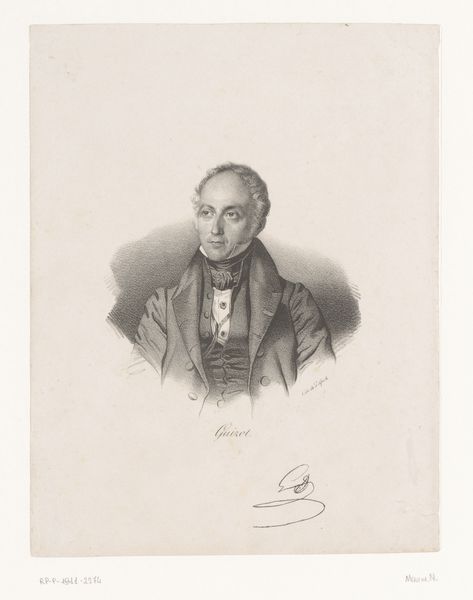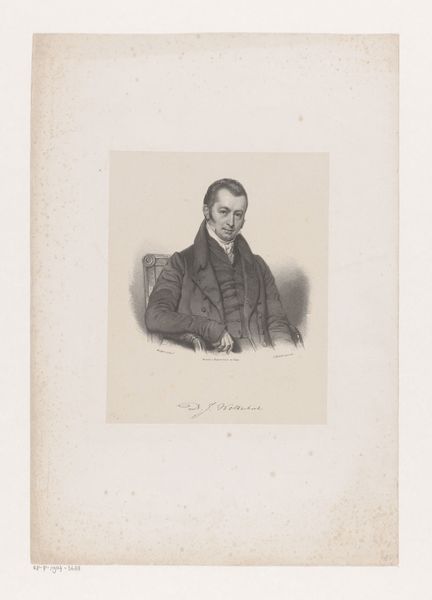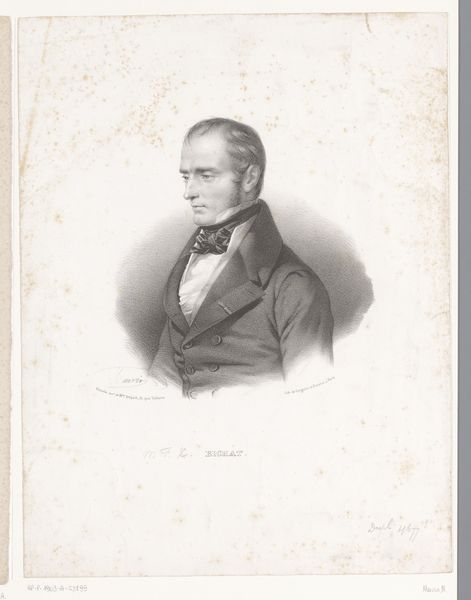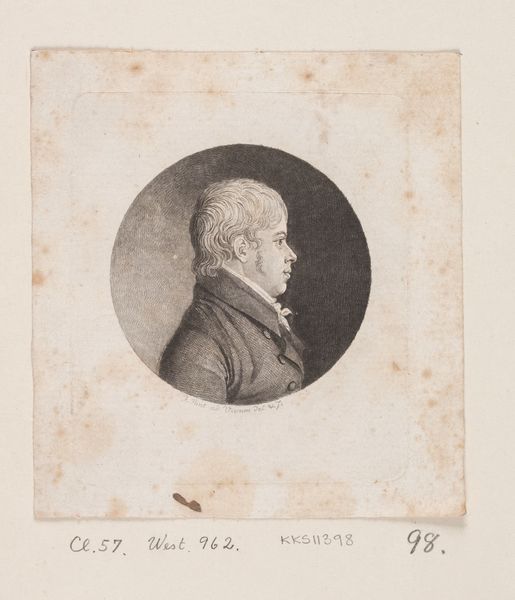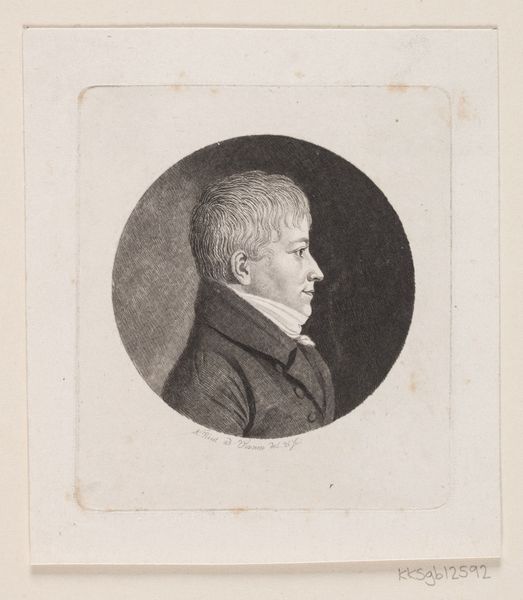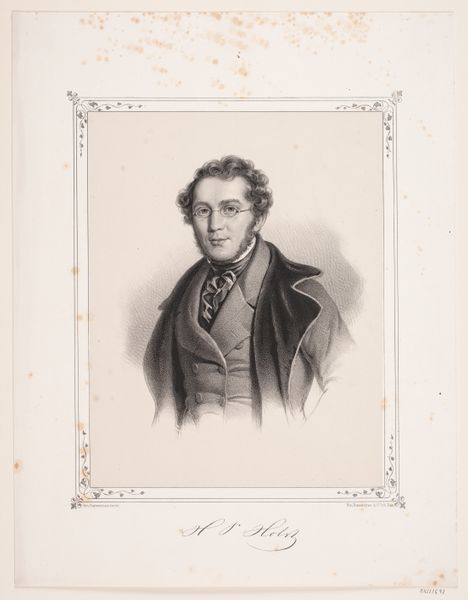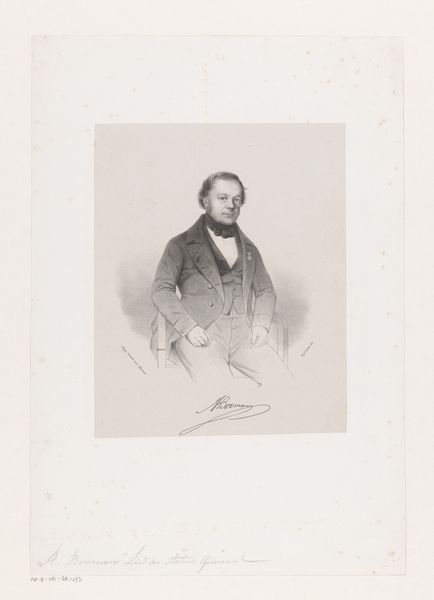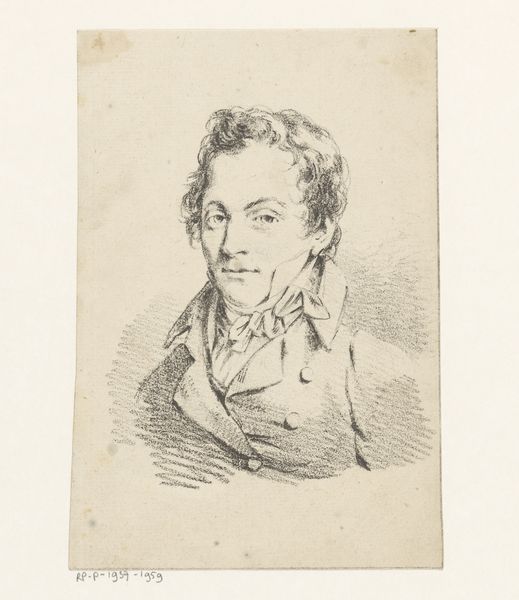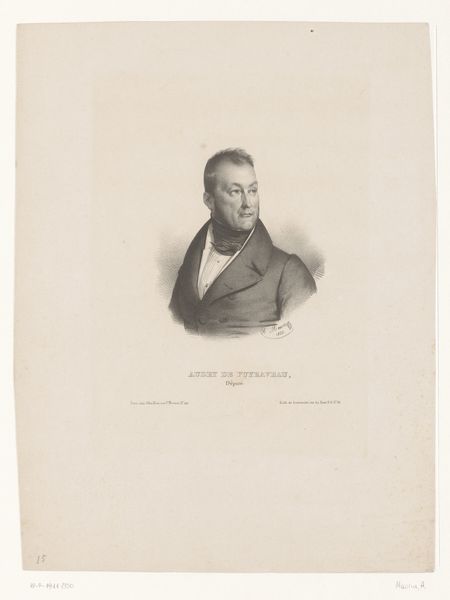
drawing, print, engraving
#
portrait
#
drawing
# print
#
figuration
#
coloured pencil
#
romanticism
#
line
#
history-painting
#
engraving
Dimensions: 17 5/8 × 13 3/8 × 7/8 in. (44.8 × 34 × 2.2 cm)
Copyright: Public Domain
Editor: So, here we have "The Grave, A Poem," an engraving from 1813 by William Blake, housed at the Met. There's a pensiveness to the sitter's expression. It's like a study in melancholy, almost. What do you see in this portrait? Curator: I see Blake grappling with the very essence of creation and mortality. Look at the pen in his hand; it's both a tool for writing poetry, and therefore for creation, but it is juxtaposed with the title. How might that confrontation—between creating and ceasing—impact its symbolic weight, especially when we consider Blake's broader obsession with the cyclical nature of life and death? Editor: It suggests he's considering how one inevitably informs the other, almost a visual memento mori. The pen gives way to the grave. I wonder about his choice to depict himself, then? Curator: Exactly! Think about the historical context; Romanticism embraced self-expression, sure, but what did it mean for Blake to equate himself, as the poet and artist, with these larger existential themes? Editor: To connect the individual experience with the universal? Curator: Precisely. Furthermore, Romanticism held idealization in high regard, yet Blake seems to push against. His gaze is wandering and a bit dishevelled. Does he symbolize artistic creation that goes hand-in-hand with unease? Perhaps artistic creation at the beginning of the 19th Century, when England struggled with the cost of political conflicts abroad, was never easy. Editor: So, the symbols here hint at not just death but perhaps the cost of creation itself? Curator: Yes, consider this in tandem with Blake's visionary approach and revolutionary zeal. We can perceive how the cultural memory embedded in visual symbols continues to evolve over time, as viewers continue to interpret the meaning of the portrait. What did this evoke for you, now that you consider his struggles more closely? Editor: I see Blake connecting the individual to a grander cultural narrative, all through these nuanced visual cues. It's much richer than I initially thought.
Comments
No comments
Be the first to comment and join the conversation on the ultimate creative platform.
